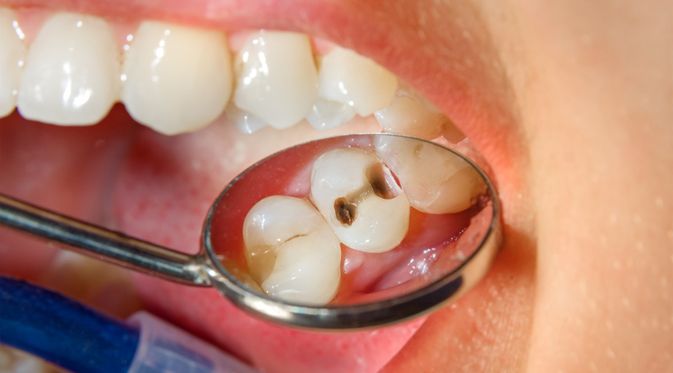Caries in the dental pulp result in inflammation and damage to the pulp tissue. The inflammatory process is molecularly characterized by the release of pro-inflammatory mediators, such as: IL-1β, IL-6, TNF-α, and NF-κB. Dental caries is caused by S. mutans bacteria which colonize and form a biofilm layer on the tooth surface. Initially, dental caries only affect the enamel on the surface of the teeth. However, over time, caries will expand to deeper parts of the teeth such as dentine and pulp if not treated immediately. In the case of caries located on the side teeth, it has the potential to spread to the adjacent teeth if left unchecked.
Treatment for caries deep enough to involve dentine is pulp capping using calcium hydroxide (Ca (OH) 2 ). The use of Ca (OH) 2 aims to form reparative, apexification, and anti-microbial dentine in the root canal of teeth. The side effect of the use of Ca (OH) 2 at certain doses and in the long term is tissue death (necrosis) in the tooth pulp chamber. This condition causes the reparative dentine that is formed to be insufficient because of the necrosis that occurs.
Propolis is widely known as a product from bees which has anti-bacterial, anti-fungal, anti-viral, anti-tumor and anti-oxidant properties. Propolis is also known to have a low level of toxicity to fibroblast cells so that it can reduce cell death rates and stimulate new fibroblast cell growth compared to Ca (OH) 2.
Pulp capping therapy using a combination of propolis and Ca (OH) 2 carried out on the teeth of experimental animals showed better results than conventional pulp capping using only Ca (OH) 2. It was characterized by increased levels of the cytokine IL-10, TLR-2., TGF-β, VEGF. The ability of propolis to increase the success rate of pulp capping is due to the content of flavonoids and CAPE (caffeic acid phenetyl ester). Based on these results, propolis is a potential bio-product to be developed into pulp capping material together with Ca (OH) 2., so the success rate of treatment will be higher than conventional techniques.
Author: Prof. Dr. Retno Pudji Rahayu, drg., M.Kes.
Details of this research can be viewed on: https://doi.org/10.12688/f1000research.22409.1
Rahayu et al., 2020. Combinations of Propolis and Ca(OH)2 in Dental Pulp Capping Treatment for The Stimulation of Reparative Dentin Formation in A Rat Model. F1000Research, 9:308. https://doi.org/10.12688/f1000research.22409.1





